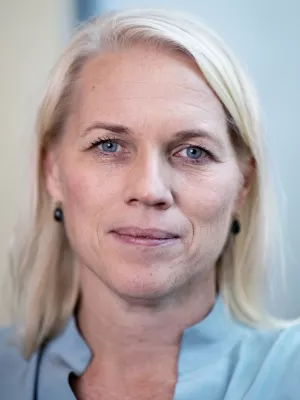
Sophia Zackrisson
Manager

Identification of Women at High Risk of Breast Cancer Who Need Supplemental Screening
Author
Summary, in English
Background Mammography screening reduces breast cancer mortality, but a proportion of breast cancers are missed and are detected at later stages or develop during between-screening intervals. Purpose To develop a risk model based on negative mammograms that identifies women likely to be diagnosed with breast cancer before or at the next screening examination. Materials and Methods This study was based on the prospective screening cohort Karolinska Mammography Project for Risk Prediction of Breast Cancer (KARMA), 2011-2017. An image-based risk model was developed by using the Stratus method and computer-aided detection mammographic features (density, masses, microcalcifications), differences in the left and right breasts, and age. The lifestyle extended model included menopausal status, family history of breast cancer, body mass index, hormone replacement therapy, and use of tobacco and alcohol. The genetic extended model included a polygenic risk score with 313 single nucleotide polymorphisms. Age-adjusted relative risks and tumor subtype specific risks were estimated by using logistic regression, and absolute risks were calculated. Results Of 70 877 participants in the KARMA cohort, 974 incident cancers were sampled from 9376 healthy women (mean age, 54 years ± 10 [standard deviation]). The area under the receiver operating characteristic curve (AUC) for the image-based model was 0.73 (95% confidence interval [CI]: 0.71, 0.74). The AUCs for the lifestyle and genetic extended models were 0.74 (95% CI: 0.72, 0.75) and 0.77 (95% CI: 0.75, 0.79), respectively. There was a relative eightfold difference in risk between women at high risk and those at general risk. High-risk women were more likely to be diagnosed with stage II cancers and with tumors 20 mm or larger and were less likely to have stage I and estrogen receptor-positive tumors. The image-based model was validated in three external cohorts. Conclusion By combining three mammographic features, differences in the left and right breasts, and optionally lifestyle factors and family history and a polygenic risk score, the model identified women at high likelihood of being diagnosed with breast cancer within 2 years of a negative screening examination and in possible need of supplemental screening.
Department/s
- LUCC: Lund University Cancer Centre
- EpiHealth: Epidemiology for Health
- Radiology Diagnostics, Malmö
- Medical Radiation Physics, Malmö
Publishing year
2020-11-01
Language
English
Pages
327-333
Publication/Series
Radiology
Volume
297
Issue
2
Document type
Journal article
Publisher
Radiological Society of North America
Topic
- Cancer and Oncology
Status
Published
Research group
- Radiology Diagnostics, Malmö
- Medical Radiation Physics, Malmö
ISBN/ISSN/Other
- ISSN: 1527-1315

